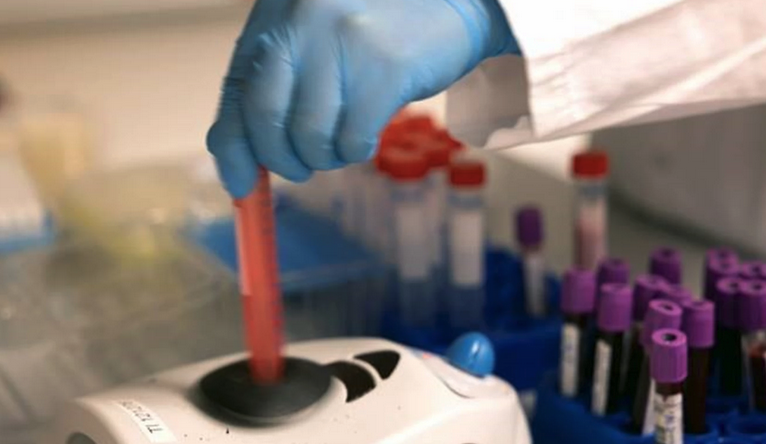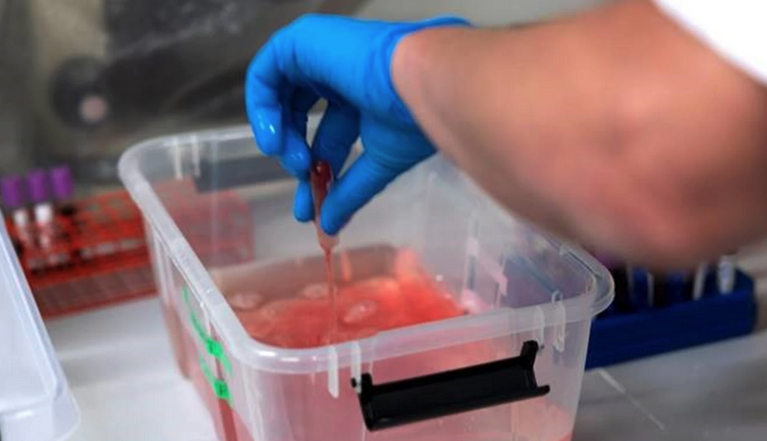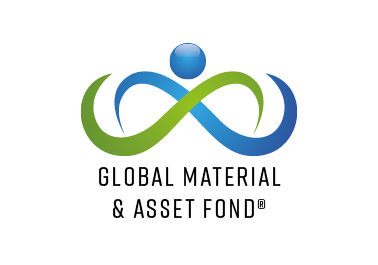Feasibility Study on recycling of Blood Collection Tubes
Blood Collection Tubes in use
Plastic blood collection tubes can be recycled
Plastic blood collection tubes can be reused after use, even if they have contained blood, a new study shows. Global Material & Asset Fond has participated in the study to promote the spread of the circular models they have developed to reduce production companies' resource consumption. The study was carried out in close collaboration with Odense University Hospital, Southern Denmark Health Innovation, the Danish Technological Institute, and BD (Becton, Dickinson and Company). In Region Southern Denmark, where 11 million blood collection tubes annually are used in southern Danish hospitals alone, it will be possible to avoid burning and with it save 33 tons of high-quality plastic from the flames.
Can you recycle the materials from used blood test tubes rather than sending them to incineration? This has a so-called feasibility study shown with particularly promising results. The partnership behind the study consists of the Global Material & Asset Fund, Odense University Hospital, Southern Denmark Health Innovation, the Danish Technological Institute, EcoFITT ApS, and the international supplier of blood collection tubes, BD (Becton, Dickinson, and Company), concludes that it is possible to recycle the plastic from used blood collection tubes without compromising on hygiene, safety and the quality of the material.
“We were excited to contribute our circular knowledge in the first step towards a closed-loop for contaminated blood collection tubes.”
Because used plastic blood collection tubes contain remnants of blood, which in some cases can also contain carriers of infection, they have previously not been suitable to be cleaned and reused like other products in the health sector, such as e.g. those made of glass or metal. Blood collection tubes have therefore until now been designed to be disposable products, even though they are made from a high-quality PET plastic that is extremely suitable for frequent recycling – especially in closed-loop use. PET, which stands for polyethylene terephthalate, is a type of plastic that is often used for food packaging because it can withstand pressure, impact, and heat.




Circular global potential
The results of the study raise expectations and open up opportunities for recycling throughout Europe and on a global scale. Through the establishment of a circular model, which the Global Material & Asset Fund has developed for other types of plastic such as e.g. PP (polypropylene) – the used blood collection tubes will be able to be cleaned and disinfected, shredded, and molded into new medical products. For the 11 million blood collection tubes made of PET plastic with a particularly high medical quality, which are used annually in the Region of Southern Denmark, this may mean that they no longer need to be disposed of as hazardous waste in an incineration plant, as is the case today, where used blood collection tubes equal approx. 33 metric tons of PET plastic are incinerated annually. It not only costs money, it also burdens the environment, and not least when the fossil carbon dioxide (CO2) is emitted with the flue gas and thus contributes to climate change. Conversely, if it succeeds in reusing the material for new products for the health sector, the use of new PET material is reduced at the same time and thus results in a reduction of resource consumption.
The promising results from the study can open huge global potential because PET plastic can be reused many times, especially when it is circulated, and the quality is known and suitable. Worldwide, billions of blood collection tubes are used and destroyed annually. But there are many more products in the laboratory and healthcare area that are currently used as single-use products made of PET plastic, processed in the right way could be successfully molded into new circular products.
- At Global Material & Asset Fond, we are happy to be able to contribute to the coordination of value chain parties and our knowledge of circular models for material use, such as in this case plastic. Ensuring uniform high quality and the same material compositions are essential factors for products' materials to be recycled in closed circuits and still retain their approvals, as in the case of a medical product. In the long term, the Global Material & Asset Fund's digital marking options will be able to manage the materials in closed circuits and document how often and exactly the same materials are used for a new product cycle. Where each material loop can again create a single-use product, but with the same material that has been used at former loops to produce new products, says Ingo Walterscheid, CEO of Global Material & Asset Fond.
- Global Material & Asset Fond's vision is to be able to use the circular rental model we have developed for materials, so that companies never run out of the materials they need for the production of their products and at a much more stable and long-term price than the one we see of price jumps, especially in these crisis-ridden times where the usual supply chains are being challenged. The world must compete and grow on knowledge, and know-how and otherwise share resources and refrain from continuing with the destructive and inefficient use of natural resources. When we are content to grow on knowledge, know-how, and the associated rights, as well as use the resources most efficiently, i.e. as far as possible without destroying them, we will reach the goal and avoid all of us and future generations suffering harm, adds Ingo Walterscheid.
Strong partnerships
In the study, specialists, experts, and representatives from the actors involved, who work with the production and handling of blood test tubes, have tested different methods for cleaning, mechanical breakdown (shredding), washing, drying, and recycling of the PET material from blood test tubes. Further research is required to identify the most effective cleaning and recycling methods that both improve the quality of the material and reduce the environmental and climate impact. There are also considerations regarding the scaling and implementation of the project. Nevertheless, the results of the study mark an important step towards the establishment of a circular model for the recycling of blood test tubes.
Please find the report "Recycling Blood Collection Tubes – a Feasibility Study - Summary of Results" and a Danish summary here:
The feasibility study was carried out in a public-private partnership between:
• Odense University Hospital, Blood tests, and Biochemistry: leading partner and initiator. Contributed with the perspective of the health sector and supplied used blood test tubes for the study.
• Global Material & Asset Fond and EcoFITT ApS were there as representatives of the industry angle about circular models for plastic products. They were responsible for planning casting tests and comparative analysis of the materials from used and unused pipes.
• Southern Danish Health Innovation: project manager on behalf of OUH. Has been responsible for planning, coordination, follow-up, reporting, and dissemination of the project's collaboration, activities, and results.
• Danish Technology Institute: plastics expert. Was responsible for testing the removal of labels, shredding, washing, and drying of the blood test tubes as well as assessment of the quality of the material.
• BD (Becton, Dickinson and Company): large international representative of suppliers of blood test tubes. Has provided data on requirements for the plastic material to be used for casting. Also provided raw materials for comparison and assessed the potential to bring recycled material into a circular loop.
You are welcome to get in touch for further information …
Ingo Walterscheid, CEO, Global Material & Asset Fond
Mob.: +45 30214773 – e-mail: iw@materials.fund

